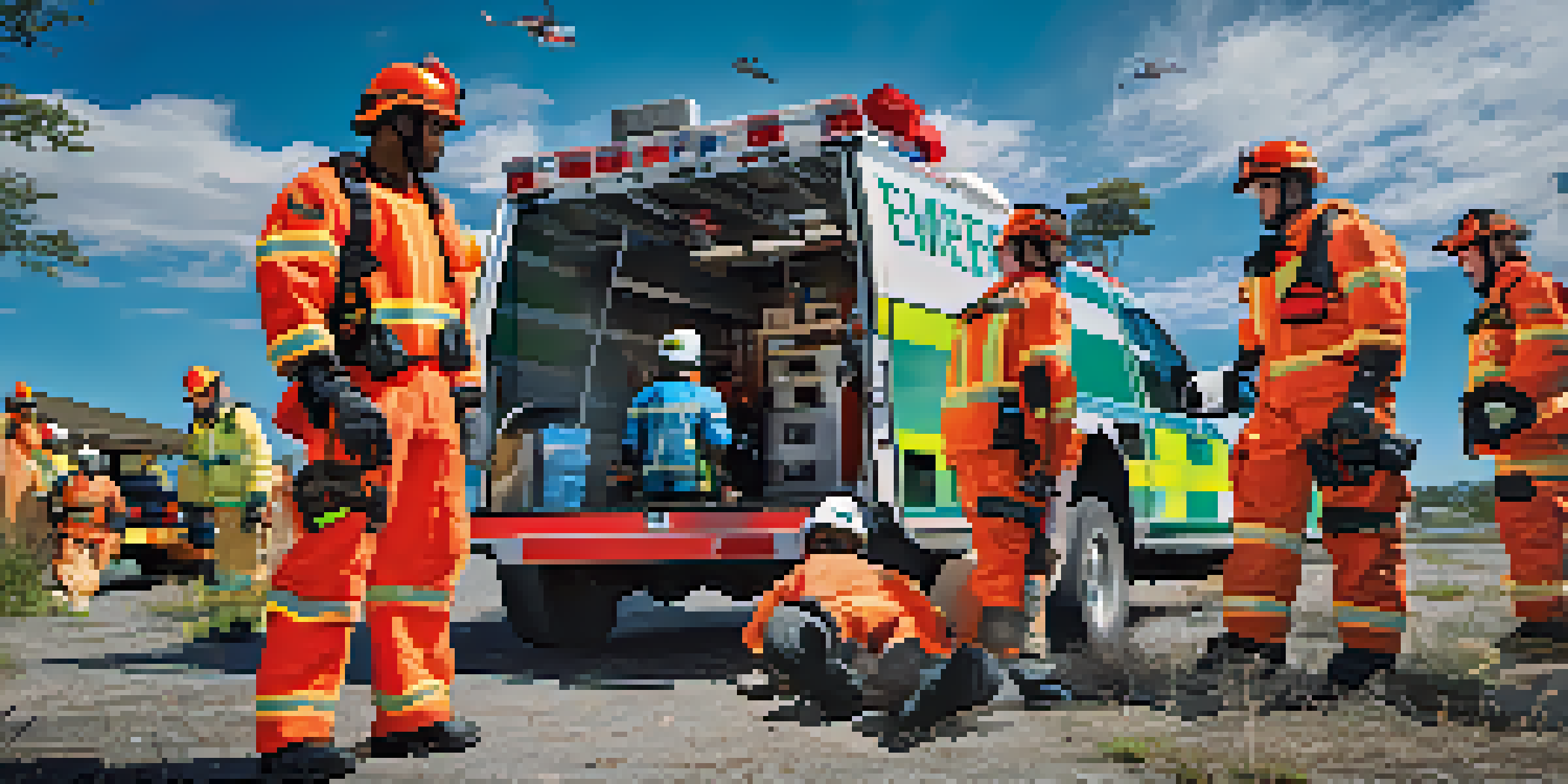Understanding Crisis Response Systems: Key Components Explained

What Are Crisis Response Systems and Why They Matter
Crisis response systems are structured frameworks designed to address emergencies effectively. They encompass strategies, resources, and protocols that guide organizations in managing crises, whether natural disasters or public health emergencies. Understanding these systems is crucial because timely and coordinated responses can save lives and mitigate damages.
In the face of a crisis, effective communication is not just important; it's a lifeline.
Think of a crisis response system as a well-rehearsed fire drill. Just as everyone knows their role when the alarm sounds, a crisis system ensures that each stakeholder understands their responsibilities during an emergency. This clarity helps streamline efforts and minimizes chaos when every second counts.
By investing time in understanding crisis response systems, organizations can enhance their preparedness and resilience. The more familiar everyone is with the processes in place, the better equipped they will be to handle unexpected challenges.
Key Components of Crisis Response Systems
At the heart of every effective crisis response system are key components like communication, coordination, and resources. Communication channels must be clear and accessible to ensure timely updates flow between all parties involved. Coordination among various teams and agencies is essential for a unified effort towards resolution.

Imagine a symphony where each musician plays their part harmoniously; this is how a well-coordinated crisis response should function. Each component, from government agencies to local volunteers, plays a unique role, and their collaboration can significantly impact the outcome of a crisis scenario.
Crisis Response Systems Save Lives
Structured frameworks enable timely and coordinated responses during emergencies, ultimately saving lives and reducing damage.
Additionally, having the right resources, including trained personnel and necessary equipment, is vital for effective crisis management. Without these, even the best-laid plans may fall short during a real emergency.
The Role of Communication in Crisis Management
Communication stands as a cornerstone of any crisis response system. It includes not only the messages shared between teams but also how information is disseminated to the public. Effective communication can help calm fears, provide essential updates, and guide individuals towards safety during chaotic situations.
Collaboration is the key to success in crisis management; no one can do it alone.
Consider the impact of social media during a crisis. Platforms like Twitter can act as real-time alert systems that inform the public about ongoing developments. However, it also underscores the need for accurate and timely information to prevent the spread of rumors.
Moreover, regular communication training for teams ensures that everyone is prepared to deliver messages clearly and effectively under stress. This preparedness can make a significant difference in how a crisis is managed.
Coordination Among Agencies: A Collaborative Approach
Coordination among various agencies is crucial for efficient crisis response. When multiple organizations come together, they can pool their resources and expertise, leading to a more robust response. This collaboration is often seen in joint exercises and simulations designed to prepare teams for real-life scenarios.
For example, during a major disaster, local government, healthcare facilities, and non-profit organizations must work together seamlessly. Each entity brings unique strengths to the table, allowing for a more comprehensive approach to crisis management.
Effective Communication is Key
Clear communication helps calm fears and guide individuals to safety during crises, making it a cornerstone of management efforts.
Establishing clear roles and communication protocols before a crisis occurs can significantly enhance coordination efforts. This proactive approach ensures that when an emergency strikes, everyone knows who is in charge and what their specific responsibilities entail.
The Importance of Training and Preparedness
Training and preparedness are fundamental elements of effective crisis response systems. Regular drills and simulations help teams practice their roles and refine their skills, ensuring they can act swiftly and efficiently during an actual crisis. This kind of preparation builds confidence among team members, which is crucial when facing high-pressure situations.
Think of training as a muscle that needs to be exercised; the more you train, the stronger and more reliable your response becomes. By investing in training, organizations not only improve individual performance but also enhance the overall effectiveness of their crisis response system.
Moreover, engaging community members in preparedness initiatives fosters a culture of resilience. When individuals know what to do in a crisis, it alleviates some burden from official responders, allowing them to focus on more critical tasks.
Utilizing Technology for Enhanced Crisis Management
In today's digital age, technology plays a vital role in crisis response systems. From emergency alert systems to real-time monitoring tools, technology enhances communication and coordination efforts. These tools can provide critical data that helps responders make informed decisions quickly.
For instance, mobile apps can notify users of emergencies in their area, guiding them on the best actions to take. Similarly, drones equipped with cameras can provide live feeds of affected areas, allowing response teams to assess situations without risking personnel.
Training Builds Resilience
Regular training and preparedness enhance team confidence and efficiency, ensuring better response during actual emergencies.
However, it's important to remember that technology should complement human efforts, not replace them. While tools can enhance response times and efficiency, the human element remains essential for empathy and effective communication during crises.
Evaluating Response Efforts: Learning from Experiences
After a crisis has been managed, evaluating the response efforts is crucial for continuous improvement. This evaluation process involves analyzing what worked well and identifying areas for improvement. Feedback from all involved parties can provide valuable insights that shape future crisis response strategies.
Think of it as a post-game analysis for a sports team; teams review their performance to learn from mistakes and celebrate successes. This reflective practice helps organizations adapt and refine their response systems, ensuring they are better prepared for future challenges.

Additionally, sharing lessons learned with the broader community fosters a culture of collaboration and collective learning. When organizations share their insights, it encourages others to refine their own processes, ultimately leading to a stronger overall crisis response framework.